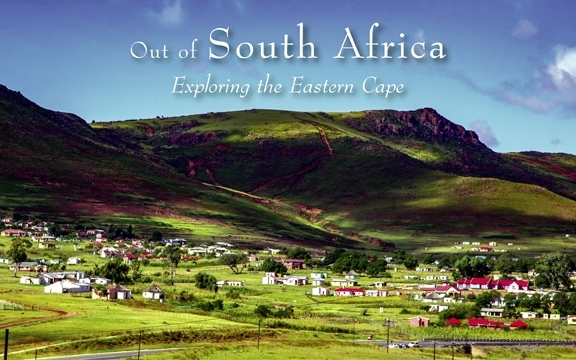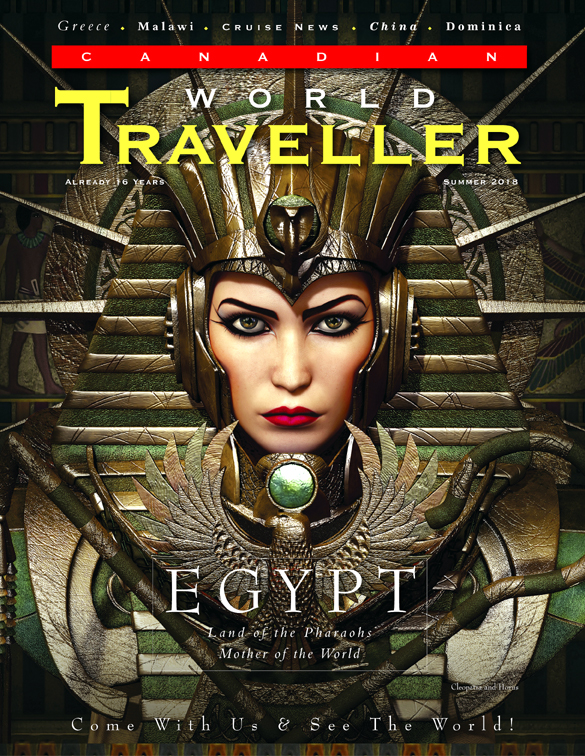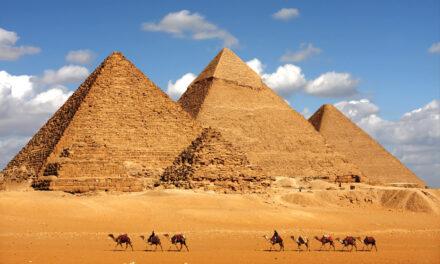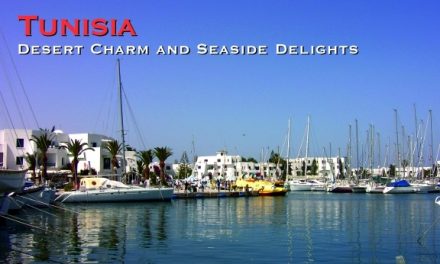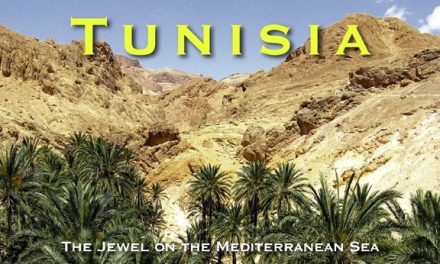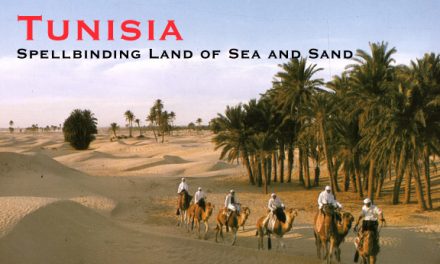South Africa
Out of South Africa, Exploring the Eastern Cape
Article & Photography by Jennifer Merrick

Long before I heard the catchphrase bucket list, I dreamt of going on safari. I’d imagine myself driving through the African plains in an open-air jeep, photographing lions, outfitted like Meryl Streep in the movie Out of Africa. Later Robert Redford would shampoo my hair while quoting poetry… (Okay, I digress.)
But now, decades later, I finally had the chance to visit this great continent with a dream trip to South Africa’s Eastern Cape, located on the southeastern coast of the country. Our safari at Amakhala Game Reserve was magical with sights of graceful giraffes rambling through the vegetation, so-ugly-they’re-cute warthogs darting about with their tails up as straight as antennas and even lions lounging at the edge of the cliff looking into the sunrise –not to mention monkeys, zebras, water buffalos, wildebeest and the rhinos.
These animals roamed through some of the most picturesque landscape I’d ever encountered with emerald green rolling plains that dipped into a large basin lined with red sand cliffs. At the bottom, was the Bushmans River that wound through even more pristine velds. (See the Stay and Play section for more information on the reserve and our accommodation at Safari Lodge).
Interestingly, as much as the safari experience lived up to my expectations (with the exception of the missing Robert Redford head massage), there was so much more that I didn’t anticipate on this trip to South Africa. Witnessing rural village life, discovering a wild coastline teeming with marine life and hearing so many different accents spoken in urban centers with diverse multi-cultural legacies were just as much bucket list adventures as photographing the big five.
Touring Mandela’s Childhood Playground
“Some of the happiest years of my boyhood were spent in Qunu,” wrote Nelson Mandela in his memoir Long Walk to Freedom. So it was a thrill to see firsthand where his remarkable life began on a Nelson Mandela early childhood excursion with Imonti Tours.
Mandela would have been 100 this year, but his heroic legacy lives on in South Africa and throughout the world. In his compelling autobiography, Mandela nostalgically described the veldts and valleys of the village, located in the former homeland of Transkei on South Africa’s Eastern Cape.
“Nature was our playground,” Mandela wrote, and what a scenic playground it is.
Greener than I expected, the rural countryside stretched out hill after rolling hill. Some valleys were shallow, while others fell deep into the earth, and I found myself catching my breath, looking down at the pastoral landscape dotted with colourful, traditional round homes, and a river wrapping around it all.
Animals were everywhere, and Velile needed to be vigilant to avoid hitting the countless sheep, as well as donkeys, pigs, chickens, dogs and cattle.
“Cows are the Eastern Cape traffic lights,” our good-natured guide joked as we came to a stop yet again to wait for the animals to saunter oh-so-slowly to the shoulder. Not that we minded though, since it gave us a chance to snap pics of the Watusi cattle, which looked quite dignified with their distinctive long horns.
As we drove down the bumpy roads, Velile pointed out significant places of Mandela’s childhood, like the railway (now in disuse), where he fled to Johannesburg with his cousin to escape an arranged marriage.
“I was a romantic,” Mandela wrote in his memoir. “And I was not prepared to have anyone select a bride for me.”
Other notable sites included the school he attended, and of course, his village homes, both the modern house Mandela had built when he was released from prison and the site of his childhood home. They’re not tourist attractions in anyway –not even a commemorative plaque, indicating that one of the greatest heroes of our time once resided at these very spots.
But Velile brought us as close as possible and pointed them out. The village of Qunu is in many ways the same as it was in the 1920s when Mandela was a child, stick fighting with his peers and sliding down rocks. An elderly villager invited us into a Shebeen, a shanty building, where homemade beer is served, but we needed to move on and so we continued down the bumpy, maze-like dirt roads.
“Even Google maps wouldn’t find it,” said Velile. The picturesque rural landscape captivated us, and it was hard to resist not getting out for photo opps at every turn, but it’s time for our next stop.
ICAMAGU Institute
Dr. Nokuzola Mndende, theologian, founded the ICAMAGU Institute to educate people about the Xhosa culture. Many of the approximately 8 million Xhosa people live in this area, and it’s Mandela’s ethnicity as well. It’s a fascinating culture, as we found out in the next couple of hours, starting with a typical lunch, consisting of samp (maize) and beans, chicken stew and squash.
Next, we toured the traditional homes, the same type of round, thatched huts that Mandela lived in, and Dr. Nokuhzola’s son, Andile, explained some of the Xhosa’s beliefs, the core of which embodies a deep respect for the environment. Andile showed us medicinal plants, including a ‘dream plant’, and he demonstrated how the remedy is used. Kneeling on the floor, he placed the plant in a wooden bowl full of water and rubbed a stick between his palms until a frothy broth appeared.
“You don’t drink the water itself, just the foam,” explained Andile. “If you’re having trouble with a dream, it will make it clear.”
His mother, a healer, passed down this knowledge to him, which is an important responsibility since, as Andile commented:
“Most youth today aren’t interested in preserving the culture.”
Nelson Mandela Museum
In Umtata, the largest city in the area, is the Nelson Mandela Museum, another interesting stop on our tour. Divided into stages of Mandela’s life: character, comrade, leader, prisoner, negotiator and statesman, the exhibitions encompass photographs and artifacts from his childhood until his presidency.
Mandela himself opened the museum in 2000, and it’s a fitting tribute to the modern-day hero who dedicated his life to garnering peace for this beautiful country. Quotes line the museum’s walls, including one in which Mandela defines his purpose:
“I will pass through this world but once, and I do not want to divert from my task, which is to unite the nation.”
Cultural Kicks on Port Elizabeth’s Route 67
Port Elizabeth, Eastern Cape’s capital, is a laid-back town with a layered history, a thriving culinary scene and a remarkable coastline. In town, we found out about Route 67, an initiative to honour Mandela through attractions of gardens, murals, sculptures and other art-based projects, representing the 67 years Mandela spent in politics.
“It’s a journey that celebrates people, heritage and culture,” said Ntina Khozi our guide from Lungston Tours.
One compelling installation was a sculpture showing people lining up to vote on the first all-race election in 1994.
“Everybody remembers where they were on that date,” said Khozi.
Raggy Charters Marine Safari
When I imagined my African safari, I certainly never pictured myself bouncing around in a boat with waves hitting the bow, splashing us with the cold Indian Ocean waters. However, this was not your average African Safari! We embarked on a marine safari with Raggy Charters in the coastal waters off Port Elizabeth in the Algoa Bay, an area that afforded outstanding wildlife viewing opportunities. The big five we hunted on this excursion were whales, dolphins, seals, sharks and penguins. No sharks or whales made an appearance, but it didn’t matter a bit because the penguins stole the show, waddling in a line going out to the water from their rocky home on St. Croix Island out to the water. Located four kilometres offshore, the island has 22,000 breeding pairs of African penguins, the largest colony in Africa. Who knew? It was my first time, seeing a penguin in the wild, a bucket list experience I never imagined when I first dreamed of Africa many moons ago.
www.southafrica.net/gl/en
Click on cover to view published article

